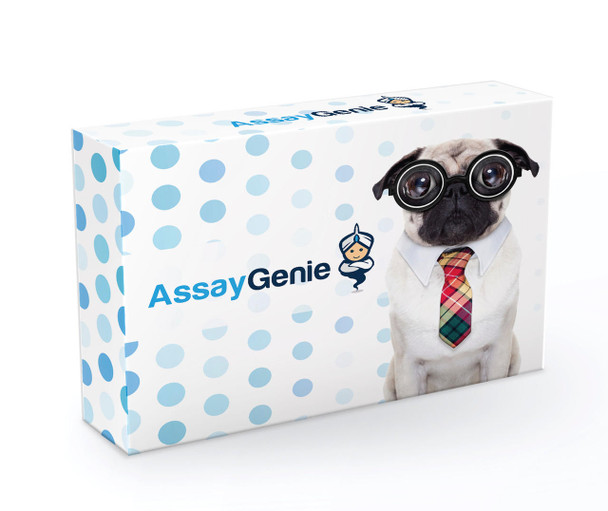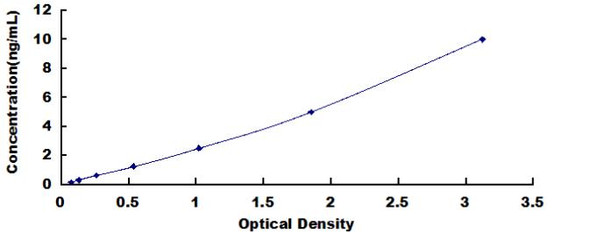Description
Rat GDNF (Glial Cell Line Derived Neurotrophic Factor) ELISA Kit
The Rat GDNF (Glial Cell Line Derived Neurotrophic Factor) ELISA Kit is meticulously developed for the precise quantitative detection of GDNF in rat biological samples. Glial cell line-derived neurotrophic factor (GDNF) is a critical neurotrophic factor known for its role in supporting the survival and differentiation of neurons, particularly in the central and peripheral nervous systems. GDNF plays a pivotal role in neuroprotection, neuroregeneration, and neural development, making it a key factor in neuronal health and function. This ELISA kit enables researchers to quantify GDNF levels, providing valuable insights into neurobiological processes, neurodegenerative diseases, and potential therapeutic strategies targeting the nervous system.
Accurate measurement of GDNF is crucial for studying neuronal health, understanding neurotrophic mechanisms, and identifying novel treatments for neurological disorders. The Rat GDNF ELISA Kit offers exceptional sensitivity and specificity, ensuring accurate and reproducible results for neuroscientific research. Manufactured under strict quality control measures, this kit delivers reliable performance and user-friendly protocols, making it an excellent tool for investigative studies in neurobiology and neuroscience.
| Product Name: | Rat GDNF (Glial Cell Line Derived Neurotrophic Factor) ELISA Kit |
| Product Code: | AEES00408 |
| Assay Type: | Sandwich |
| Format: | 96T |
| Assay Time: | 3.5h |
| Reactivity: | Rat |
| Detection Range: | 78.13-5000 pg/mL |
| Sensitivity: | 46.88 pg/mL |
| Sample Type & Sample Volume: | Serum, plasma and other biological fluids, 100μL |
| Specificity: | This kit recognizes Rat GDNF in samples. No significant cross-reactivity or interference between Rat GDNF and analogues was observed. |
| Reproducibility: | Both intra-CV and inter-CV are < 10%. |
| Application: | This ELISA kit applies to the in vitro quantitative determination of Rat GDNF concentrations in serum, plasma and other biological fluids. |
This ELISA kit uses the Sandwich-ELISA principle. The micro ELISA plate provided in this kit has been pre-coated with an antibody specific to Rat GDNF. Standards or samples are added to the micro ELISA plate wells and combined with the specific antibody. Then a biotinylated detection antibody specific for Rat GDNF and Avidin-Horseradish Peroxidase (HRP) conjugate are added successively to each micro plate well and incubated. Free components are washed away. The substrate solution is added to each well. Only those wells that contain Rat GDNF, biotinylated detection antibody and Avidin-HRP conjugate will appear blue in color. The enzyme-substrate reaction is terminated by the addition of stop solution and the color turns yellow. The optical density (OD) is measured spectrophotometrically at a wavelength of 450 nm ± 2 nm. The OD value is proportional to the concentration of Rat GDNF. You can calculate the concentration of Rat GDNF in the samples by comparing the OD of the samples to the standard curve.
| Kit Components: | An unopened kit can be stored at 2-8℃ for 1 month. If the kit is not supposed to be used within 1 month, store the components separately according to the following conditions once the kit is received.
|
| 1. | Add 100μL standard or sample to the wells. Incubate for 90 min at 37°C |
| 2. | Discard the liquid, immediately add 100μL Biotinylated Detection Ab working solution to each well. Incubate for 60 min at 37°C |
| 3. | Aspirate and wash the plate for 3 times |
| 4. | Add 100μL HRP conjugate working solution. Incubate for 30 min at 37°C. Aspirate and wash the plate for 5 times |
| 5. | Add 90μL Substrate Reagent. Incubate for 15 min at 37°C |
| 6. | Add 50μL Stop Solution |
| 7. | Read the plate at 450nm immediately. Calculation of the results |






